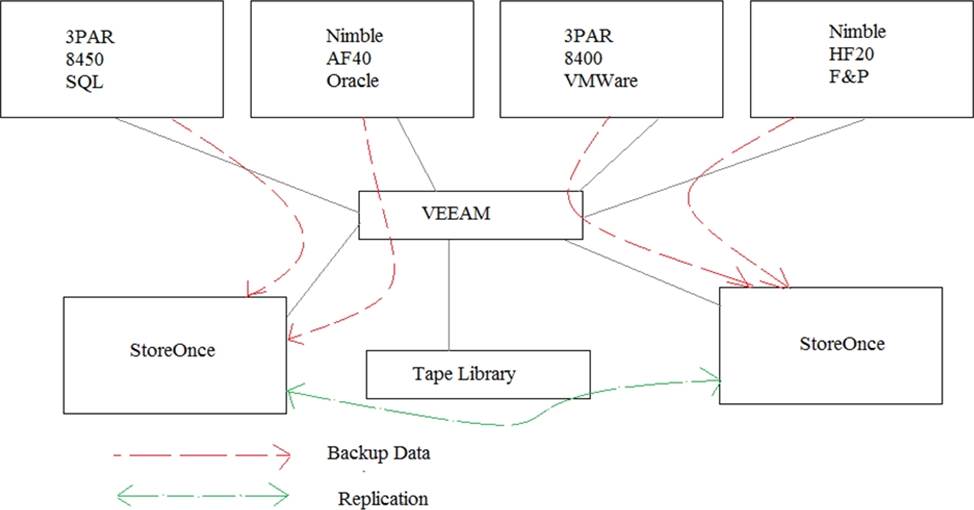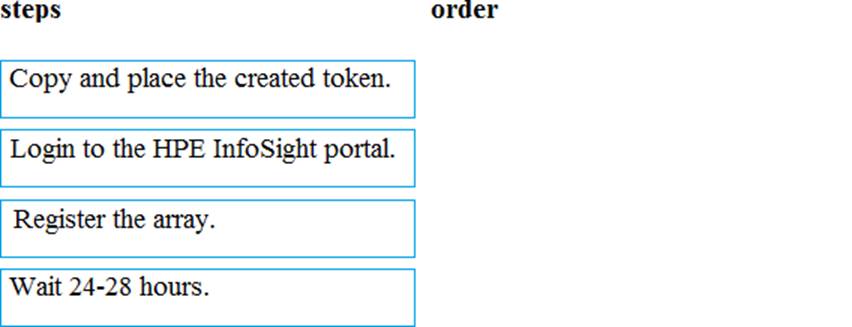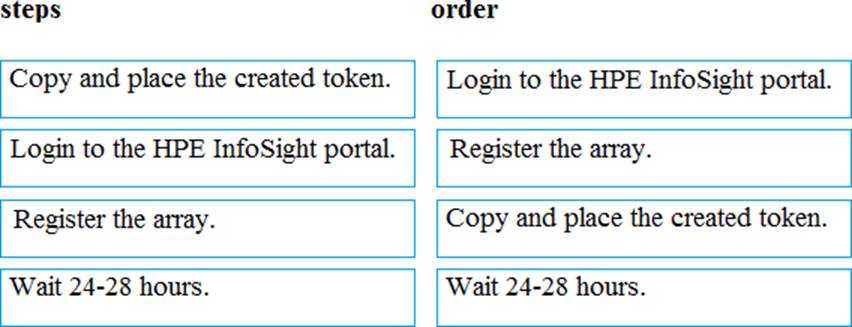HP HPE0-J58 Designing Multi-Site HPE Storage Solutions Online Training
HP HPE0-J58 Online Training
The questions for HPE0-J58 were last updated at Dec 14,2025.
- Exam Code: HPE0-J58
- Exam Name: Designing Multi-Site HPE Storage Solutions
- Certification Provider: HP
- Latest update: Dec 14,2025
A startup company is considering an HPE Nimble solution. They have a small IT budget, and they need to be future-proof for changing performance requirements.
How does the Nimble architecture meet the company needs? (Select two.)
- A . native support for block and file services
- B . minimal downtime technology refresh
- C . Support for FCoE
- D . non-disruptive technology refresh
- E . ability to mix-and-match All flash and hybrid nodes
You are designing an HPE 3PAR replication solution for a customer in a metropolitan area that includes two main sites and a third disaster recovery site. The main sites will be in synchronous replication. The disaster recovery site can be asynchronously replicated.
What are two points you should highlight to the customer? (Select two.)
- A . Tertiary site volume paths are active/read only
- B . Quorum Witness at the third site enables automatic failover to tertiary site
- C . Secondary site volumes paths are active/optimized read/write
- D . Quorum Witness at the third site enables automatic failover to the secondary site
- E . Primary site volumes paths are standby read/write
A customer has an HPE Nimble Storage array. They plan to add a second HPE Nimble Storage array to their existing group.
What is the expected write behavior to a volume once the new array is added to the same pool as the existing array?
- A . Data will be written to the new array until it is the same percent full as the original array
- B . Data will immediately start to alternate writes between the two arrays
- C . Data will continue to write to the first array until there is 40% free space available, and then alternate writes between the two arrays
- D . Data will be stripped and automatically re-balanced across the two arrays
A customer has three 4-node HPE 3PAR arrays. Two of the arrays are deployed at a primary site, and the third array is deployed at a disaster recovery site. Both arrays at the primary site are replicated to the single array at the disaster recovery site.
All replication is asynchronous periodic. All arrays are utilizing 4 RCIP links for replication.
The customer needs to add a third array at the primary site. They would like to use the existing array at the disaster recovery site as a replication target for this additional array.
What must the architect consider to meet this customer requirement?
- A . A single pair of RCIP ports on one array can have a Remote Copy relationship with up to two other arrays
- B . Remote Copy fan-in ratios of greater than 2:1 are only supported with RCIP when using 10 Gb Ethernet links
- C . Arrays involved in a Remote Copy relationship must have the same number of node pairs
- D . Asynchronous streaming replication must be used for Remote Copy fan-in ratios greater than 2:1
A customer needs to setup specific replication bandwidth requirements to limit the bandwidth between HPE Nimble Storage replication partners, which is different than the bandwidth requirements to another Replication Partner.
Which Bandwidth parameter should the customer use?
- A . Array-to-array Limit
- B . Per-partner limit
- C . Partner Maximum limit
- D . Overall limit policy
You have chosen to utilize HPE 3PAR synchronous replication in order to meet the customer stated
requirement of RPO=0.
What is a key consideration you need to explain to the customer?
- A . Host write latencies will decrease
- B . Host write latencies will increase
- C . Host writes can be committed to either primary or backup storage before host acknowledgment
- D . RC sync can only be deployed over FC links
You are proposing a replication solution to a customer. A competitor offers a solution based on storage
virtualization appliances.
What should you stress about an HPE 3PAR replication solution in regard to the competitor’s proposal?
- A . It will add on-the-fly encryption and compression to data being replicated outside the customer’s DC
- B . It means less overhead for management and monitoring
- C . It offers best-in-class backup and restore capabilities
- D . It offers superior virtualization of 3rd party storage arrays
Refer to the exhibit.

A customer has the environment shown. They currently perform application-consistent daily full backups via Veeam backup to an HPE StoreOnce device. These backups are then replicated to an alternate device using Catalyst copy.
Changing business requirements have mandated the RPO and RTO for the customer’s SQL databases be reduced to 15 minutes. Due to the size of the databases, it is not possible to meet this requirement with their existing backout application.
What should you recommend the customer implement in order to meet their new requirement?
- A . HPE 3PAR Remote Copy in Synchronous Mode
- B . HPE RMC Express Protect
- C . SPE StoreOnce Cloud Bank
- D . HPE 3PAR Remote Copy in Asynchronous Streaming Mode
Which advantage is provided by HPE 3PAR Remote Copy across all replication modes?
- A . support of all Remote Copy topologies
- B . automatic recovery of array failure independent of Remote copy topology
- C . Remote Copy support up to 100ms latency over all transport layers
- D . all Remote Copy topologies yield identical RPO and RTO
DRAG DROP
Click and drag the steps on the left into the appropriate order on the right to set up an HPE 3PAR array in InfoSight.

Latest HPE0-J58 Dumps Valid Version with 60 Q&As
Latest And Valid Q&A | Instant Download | Once Fail, Full Refund


